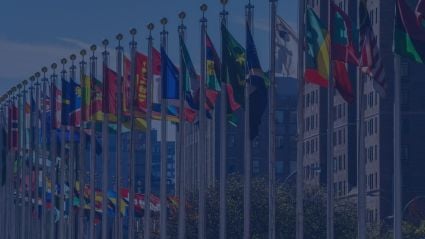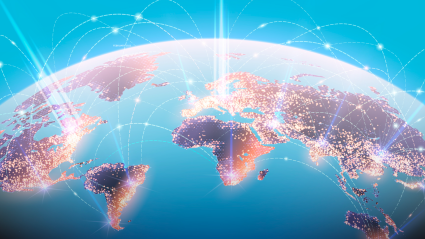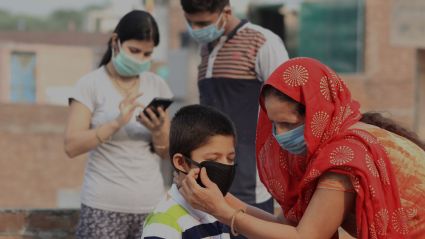
“What will the world economy look like when we fast-forward to the other side of the COVID-19 crisis?”
Looking toward a Post-Pandemic Africa
The 2008 financial crisis has often been referred to as the worst economic disaster since the great depression. Triggered by the availability of cheap credit that widened the gap between household incomes and debt, and by speculative activities in U.S. and European financial and property markets, that crisis resulted in what is known as the great recession. Sub-Saharan Africa was to some extent insulated from the most severe effects of the crisis as commodity prices remained strong, and (once they had recovered from the initial shock) investors started to look to emerging and frontier markets for higher yields than what they could find in advanced economies. Fast-forward to 2019, the global economy had stabilized and adapted itself to a “new normal.” Financial market players had, in many cases, learned from their mistakes and began incorporating credit enhancements to structured financing products and derivatives in all financial transactions. And the Basel Committee on Banking Supervision had delivered Basel III to help address both bank-specific (“micro-prudential”) and broader, systemic risks to the international economy.
Then came the pandemic. What will the world economy look like when we fast-forward to the other side of the COVID-19 crisis? Unlike in 2008, this crisis does not have financial roots, and we are now seeing that the likelihood of African economies remaining insulated is relatively low. The world will get through this pandemic, through prayer, collaboration between populations and governments, and hopefully collaboration across countries as well. We will eventually recover from the economic slump that will follow. But expecting life to go back to how it was before 2020 would be erroneous – and the new “new normal” for large economies such as the U.S. and China will likely look very different from realities for smaller markets in Africa. In my view, the twin crises we are facing today – on the health and economic fronts – will change Africa’s reality in at least five critical ways:
1. Role of the State and the Social Safety Net
Most developing economies will face the need to move towards a bigger role for the state – particularly in healthcare. In addition to health systems, to the extent that national budgets (combined with foreign aid) can support it, there will be a move towards increased state support for indispensable services, the unemployed, workers in the formal economy, and the homeless. Many countries (including in the West) may have to either support or nationalize critical sectors. Indeed, the U.K. has already extended state control to railways and much of the private medical sector. Developing economies, too, may face calls to nationalize – or subsidize access to – essential services including transport, private education, and private medical services. These changes will require finding a way to sustainably increase levels of state borrowing, ramp up quality public-private partnerships, and improve the regulation of pricing and standards in these sectors. In time, and once the economy recovers, much higher taxes (and better mobilizing the resources of the informal sector) will also likely be inevitable.
2. Social Fabric
This crisis is changing the shape of society. Unlike protectionist responses that we have seen in several Western economies, there is a good chance that in much of Africa there will be a greater sense of social solidarity, both within and across countries. In the current fight against COVID-19 and the battles ahead against future pandemics, we are very literally “all in this together,” rich and poor. In a world of closed borders, the rich in Africa are not be able to travel to Europe, the U.S., or the Middle East for medical care; they will need to rely on domestic health services to survive just as much as everyone else. On the upside, they may be able to help push for (or potentially help fund?) much-needed improvements in those services in the long-run. As for Kenyans in the informal sector, which makes up at least 70% of employment in Kenya, the prevalence of COVID-19 and the success of efforts to “flatten the curve” through social distancing measures and reduced mobility remain a concerning question-mark, impossible to forecast. Clearly, though, their inclusion in new economic thinking for the post-COVID-19 era will be essential.
3. International Supply Chains
It is improbable that after this crisis, countries will return to the “just-in-time” global supply chain economy that has characterized the last 10-15 years. This system was somewhat efficient in financial terms but relied on countries allowing fast and free trade and travel across borders. Africa, to be specific, will need to review its long-distance supply chains and reliance on just-in-time deliveries from (and exports to) halfway across the globe. On the export side, and as discussed in the box below, Kenya’s cut flower industry illustrates this vulnerability well. On the import side and looking at smaller companies, African SME’s that deal in secondhand clothing, electronics and other products are also being adversely affected.
To reduce these supply chain vulnerabilities, African economies will need to look more closely at trade with their neighbors and within the continent. This will require significant improvements in cross-border infrastructure, as well as progress on the tariff and regulatory reforms put into motion as part of the African Continental Free Trade Agreement. In the meantime, and in order to protect export- and import-dependent domestic industries, capital markets in developing economies may also need to embrace future-flow securitization of cash flows as a substitute to the conventional loans from commercial banks and other financial institutions.
Impact on Kenya’s cut flowers industry
Cut flowers must be transported overseas with utmost urgency using a “cold-chain,” because flowers lose 15% of their value for every extra day spent traveling. Cut flowers are Kenya’s second-most important export after tea and a large source of jobs, employing over 100,000 people directly and an estimated two million indirectly. But while Kenya is the world’s leading cut flower exporter to Europe (with a 38% market share) it keeps a very small percentage of production for domestic or intra-African sales. With travel restrictions and events and celebrations being cancelled across Europe, by end April 2020 Kenya’s flower exports were under 35% of usual levels for this time of year, and tons of fresh flowers are being mowed over as they go to waste.
4. Reduced Economic Reliance Overall
Developing economies will be forced to reassess (and hopefully reduce) their economic over-reliance on developed economies. This realization is growing in Africa as many African countries witness capital flight by foreign investors. Kenya’s stock markets have already been dealt a severe blow due to the exit of foreign investors to safer havens, resulting in heavy losses for domestic institutional investors. This will consequently lead to job losses and decreased standards of living for the population. Capital inflows are further dropping as job losses in the United States and in other advanced economies slash remittances from the diaspora. Tourism, another of Kenya’s top foreign exchange earners alongside agriculture and remittances, has also ground to a halt due to travel restrictions – and will likely take a long time to rebound even once borders reopen. Although Kenya is expected to maintain foreign reserves amounting to 4 months of import cover in adherence to the Central Bank of Kenya act and 4.5 months under East Africa Community convergence criteria, more conservative metrics for sovereign risk management might be warranted after this crisis.
5. Indebtedness
The move to more self-reliance, though, will be complicated by the fact that developing economies that consistently suffer from deficit budgets and high public debt will be forced to borrow on a concessional basis from multi-lateral organizations in order to rebuild their economic resilience and protect jobs. Not only will this borrowing widen the gap between advanced economies and developing economies around the world, but by worsening the debt-to-GDP ratios of developing economies, it will lower their credit ratings. Kenya recently received a disbursement of US$739 million from the IMF’s Rapid Credit Facility and is still awaiting approval of World Bank and European Union loans to combat the ramifications of COVID-19. On May 7, 2020, Moody’s downgraded Kenya’s credit rating from B2 with a stable outlook to B2 with a negative outlook, citing this growing indebtedness as well as the “combined impact of border closures and measures to contain the spread of the coronavirus” and “supply chain disruptions [that] will weigh on almost all sectors of Kenya’s economy.” These knock-on effects are particularly concerning given the importance of international credit ratings for African governments to be able to raise funds, attract international investors, finance long-term infrastructure projects and the like.
Conclusion
We still have so much uncertainty ahead of us. Moody’s expects Kenya’s real GDP growth to slow to 1% in 2020 (well below the five-year average of 5.6%), and the World Blank has warned that Kenya may even face a recession should it “move into a full shutdown” or face further unexpected negative shocks (such as drought or a second-round of locust invasion, after an initial January 2020 onslaught). But like the droughts, the locusts, and other scourges of strangely “biblical proportions” (in the words of the United Nations), the COVID-19 crisis will pass. I, for one, am confident that after the storm, the sun will shine again. But it will shine on a rather changed world, and a changed Africa.

















